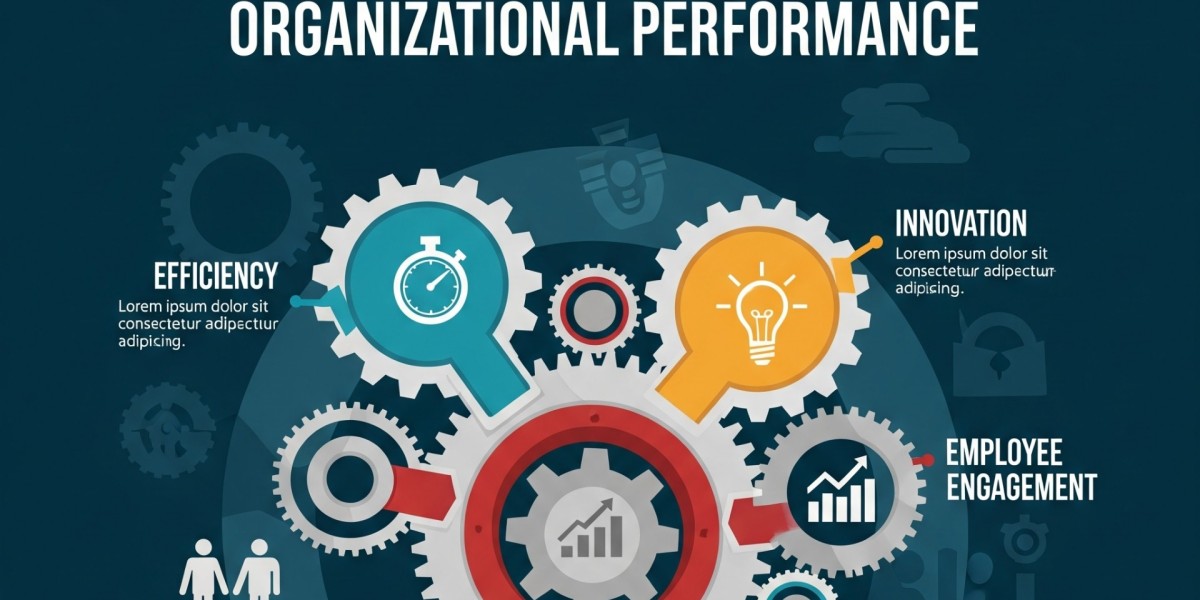What sets thriving organizations apart from those that always fall behind? The answer often lies in how effectively they measure, manage, and enhance their overall performance. At its core, organizational performance measures a company’s success in achieving its financial, operational, and cultural goals.
At its core, improving performance isn’t just about boosting profits. It’s about creating a sustainable, adaptable organization capable of meeting evolving market demands while maintaining internal health.
What Does Performance Mean for a Company?
It is the combined outcome of a company’s efficiency, productivity, and capacity to achieve its strategic objectives. It measures how well resources, people, processes, and technology are aligned to produce desired outcomes.
Think of it as the business equivalent of a health check-up: instead of only tracking revenue, it evaluates how every part of the organization contributes to success.
Why Is It Important?
Performance is the definitive measure of an organization’s success, revealing whether its strategies, resources, and efforts are truly delivering meaningful results and driving long-term growth. Without it, decisions become guesswork. Strong performance management, backed by well-defined performance standards, provides clear benchmarks, reveals strengths and weaknesses, and guides resources toward the areas that matter most. It also boosts employee engagement by showing how individual contributions connect to the company’s broader mission.
When leaders track performance effectively, they can make sharper, faster strategic moves, from market expansion to internal restructuring.
Key Drivers of Strong Performance
High-performing organizations usually excel in several interconnected areas. They begin with a clear vision, so everyone knows the mission and their part in it. Operational efficiency follows, as streamlined processes save time, reduce costs, and improve quality.
Equally important is employee engagement; motivated, skilled people fuel innovation and productivity. Data-driven decision-making empowers leaders to act with confidence, while adaptability to change keeps the company resilient in shifting markets.
How to Measure a Company’s Performance
Measurement should go beyond profit margins. Popular approaches include Key Performance Indicators (KPIs), which track metrics like revenue growth, market share, and customer satisfaction. Some companies use a balanced scorecard, which looks at financial results alongside customer feedback, internal process efficiency, and opportunities for learning and growth.
Benchmarking against industry leaders can highlight areas for improvement, while employee surveys provide insight into morale and alignment with company values. A mix of these tools, along with regular performance review processes, gives the clearest picture of performance.
Strategies to Improve Performance
Improving performance requires a coordinated approach. SMART goals, Specific, Measurable, Achievable, Relevant, and Time-bound, create clarity, sharpen focus, and strengthen accountability, ensuring that every effort contributes directly to the organization’s overall objectives. Training and development programs ensure teams remain competitive, while open communication reduces errors and builds trust.
Technology also plays a role: automation and analytics tools can uncover inefficiencies and highlight growth opportunities. Recognizing and rewarding contributions keeps motivation high and fosters a culture of continuous improvement.
Common Challenges and How to Overcome Them
Many organizations face similar obstacles. Lack of alignment between departments can slow progress; addressing this requires clear communication and shared objectives. Resistance to change is another hurdle, which can be eased by introducing improvements in smaller, manageable steps.
Inconsistent data tracking often leads to unreliable insights, making it essential to standardize measurement methods. Burnout, if left unaddressed, erodes morale and productivity; a balanced workload and wellness initiatives can counteract this.
Real-World Example: Turning Performance Around
A mid-sized manufacturing firm struggling with falling sales and low morale introduced quarterly KPIs, lean manufacturing training, and monthly leadership feedback sessions. Within a year, production efficiency rose by 18%, customer satisfaction by 12%, and employee turnover fell by 25%. This demonstrates how targeted, well-managed actions can produce measurable results.
You can also watch : Experience Seamless Field Management with EmpMonitor’s Field Force Tracking Application
Wrapping Up :
Organizational performance shows how well a company reaches its strategic goals by effectively leveraging people, processes, and resources, while maintaining adaptability, fostering innovation, and ensuring sustainable growth in an ever-changing business environment.
Strong performance management depends on clarity of vision, operational efficiency, engaged employees, and adaptability. By using the right measurement tools and committing to continuous improvement, organizations can ensure sustainable success and resilience in changing markets.
FAQ
Q: What exactly is organizational performance?
It’s how effectively a company achieves its goals while optimizing the use of resources.
Q: How can it be measured?
Through KPIs, balanced scorecards, benchmarking, and employee feedback systems.
Q: What’s the fastest way to improve it?
Align goals across the organization, invest in skill development, and use data for informed decision-making.








